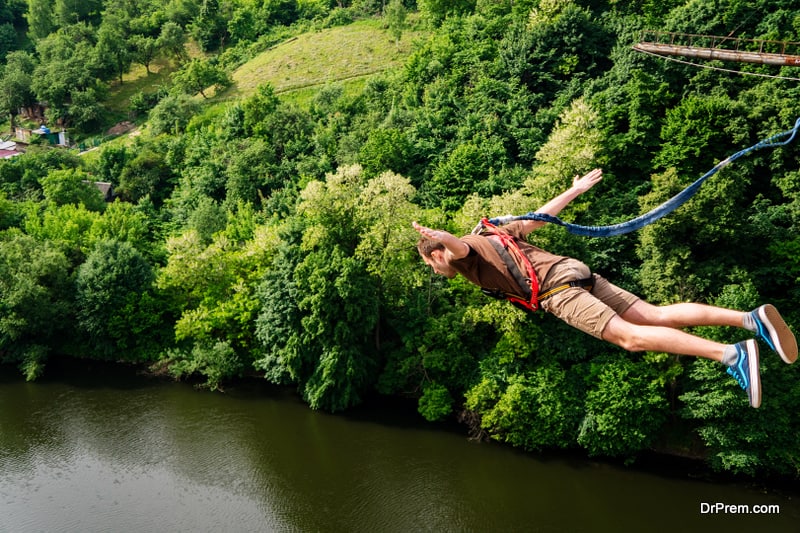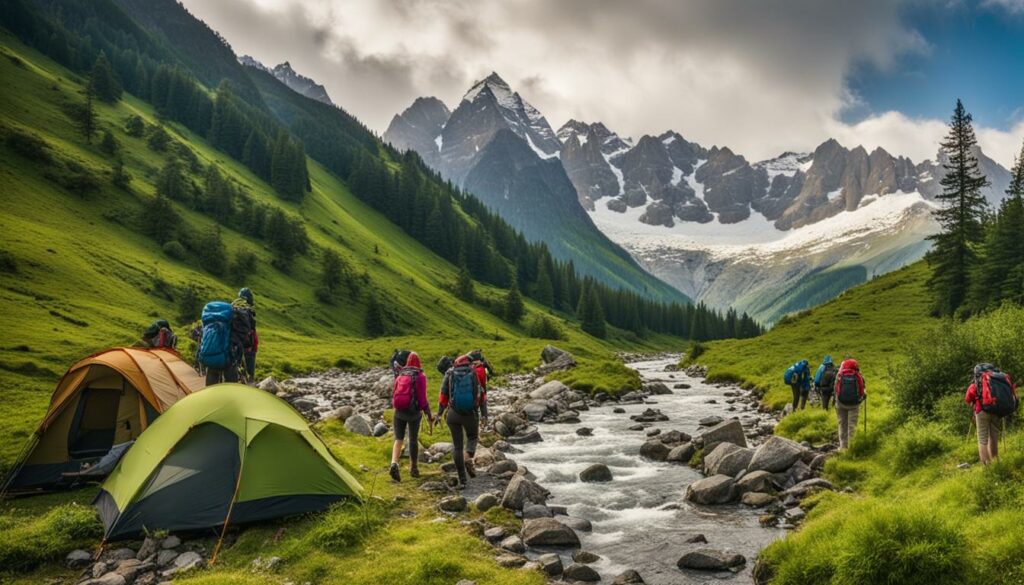In recent years, adventure tourism has experienced a surge in popularity, becoming one of the fastest-growing sectors in the travel industry. This form of tourism, characterized by physical activity, exploration, and often thrilling experiences, appeals to a wide array of travelers seeking something beyond the traditional beach resort getaway. Whether it’s hiking through rugged mountains, exploring remote jungles, or engaging in heart-pounding activities like skydiving, adventure tourism has captivated the hearts and minds of a diverse global audience.
But what makes adventure tourism so appealing? Is it the allure of the unknown? The challenge? The opportunity for self-discovery? In this article, we will explore the reasons behind the rising popularity of adventure tourism and discuss the various factors that contribute to its widespread appeal. We will also delve into the types of adventure tourism experiences, the benefits it offers, and why more and more travelers are opting for this exciting alternative to conventional vacations.
Key Takeaways
- Adventure tourism offers thrilling experiences that combine physical challenge, exploration, and personal growth.
- The rise of adventure tourism is driven by a desire for unique, authentic experiences and the influence of social media.
- Adventure tourism provides numerous health benefits, fosters cultural awareness, and boosts local economies.
- Popular adventure activities include hiking, trekking, wildlife safaris, and extreme sports.
- Adventure tourism promotes responsible travel practices and sustainability to protect the environment and local cultures.
The Essence of Adventure Tourism
Adventure tourism is defined by activities that involve a certain level of physical exertion, a degree of risk, and the exploration of natural landscapes. Unlike traditional vacations, which focus on relaxation and luxury, adventure tourism encourages participants to engage with their environment in a more immersive way. The experiences often take place in remote or exotic locations, from deep forests and vast deserts to icy tundras and soaring mountain peaks.
Adventure tourism covers a wide range of activities, including:
- Trekking and Hiking: Exploring nature on foot through trails, mountains, or jungles.
- Water Sports: Activities like kayaking, rafting, and surfing in rivers, lakes, or oceans.
- Extreme Sports: Paragliding, bungee jumping, rock climbing, skydiving, and more.
- Wildlife Safaris: Experiencing the thrill of seeing wild animals in their natural habitat.
- Cultural Adventures: Immersing oneself in local cultures, sometimes through challenging or remote experiences.
- Ecotourism: Traveling with a focus on conservation and sustainability.
Adventure tourism taps into the human desire for exploration, excitement, and personal growth, combining physical challenge with the joy of discovering the world’s most beautiful and wild places.
Factors Contributing to the Popularity of Adventure Tourism
1. The Thrill of the Experience
One of the primary drivers of the popularity of adventure tourism is the thrill and excitement it offers. For many travelers, the standard vacation—whether it’s lounging on a beach or sightseeing in a city—has lost its appeal. Adventure tourism, on the other hand, offers heart-racing activities that push travelers out of their comfort zones.
The feeling of adrenaline coursing through one’s veins as they scale a cliff, plunge into a river, or soar through the sky can be incredibly exhilarating. This sense of accomplishment and excitement is one of the most significant reasons why more travelers are choosing adventure-based vacations.
2. Personal Growth and Transformation
Adventure tourism often challenges individuals to step out of their comfort zones and overcome fears. The physical and mental challenges presented by adventure activities can lead to personal growth and transformation. Completing a challenging trek or conquering a fear of heights through skydiving can build self-confidence, resilience, and a sense of accomplishment.
For many, adventure tourism is not just about the destination but about the internal journey it facilitates. It allows travelers to discover their limits, build character, and gain new perspectives on their lives and the world around them.
3. Connection to Nature
In today’s fast-paced, technology-driven world, many people are yearning for a break from urban life and a chance to reconnect with nature. Adventure tourism offers the perfect opportunity to immerse oneself in pristine natural environments, from lush forests and sparkling lakes to towering mountain ranges and remote deserts.
The rising interest in sustainable travel has also contributed to this connection with nature. More travelers are opting for ecotourism experiences that prioritize environmental conservation and minimize their carbon footprint. By engaging in activities such as hiking, wildlife safaris, or nature treks, travelers can experience nature in a more intimate and authentic way.
4. Desire for Unique and Authentic Experiences
Modern travelers are increasingly seeking experiences that are unique and off the beaten path. Adventure tourism allows travelers to escape the crowded tourist attractions and experience the world in a more authentic and personal way. Whether it’s trekking to a hidden waterfall in the Himalayas, exploring ancient ruins in the desert, or camping under the stars in the Arctic, adventure tourism provides the chance to experience destinations that are often far removed from mass tourism.
This quest for authenticity has led to the rise of niche adventure experiences such as cultural immersion, community-based tourism, and remote, off-grid travel experiences.
5. Social Media Influence
The role of social media cannot be underestimated in the rise of adventure tourism. With platforms like Instagram, Facebook, and YouTube, travelers now have the ability to share their experiences with a global audience in real time. Stunning photos of hikes in Patagonia, wildlife encounters in Africa, or extreme sports in the Swiss Alps inspire followers to pursue similar experiences. The desire to “share the adventure” and create memories that stand out on social media platforms has become a major motivator for many travelers.
Social media influencers and travel bloggers who focus on adventure tourism have also played a significant role in shaping trends and promoting new destinations and activities.
6. Increased Accessibility and Technology
Advancements in technology have made adventure tourism more accessible than ever before. From high-quality gear and equipment to GPS devices and apps that help travelers navigate remote locations, technology has opened up new possibilities for adventure tourism. In addition, the rise of budget airlines, online booking platforms, and global travel networks has made it easier for travelers to reach remote and exotic destinations that were once difficult to access.
Benefits of Adventure Tourism
1. Physical and Mental Health Benefits
Adventure tourism often requires physical exertion, which can have numerous health benefits. Activities like hiking, trekking, and kayaking provide cardiovascular exercise, improve fitness levels, and promote overall health. These activities also reduce stress, boost mood, and enhance mental well-being by promoting the release of endorphins.
Additionally, engaging in outdoor adventure activities is a natural stress reliever. Being immersed in nature has been shown to improve mental clarity, increase creativity, and reduce the negative effects of daily stressors.
2. Cultural Awareness and Education
Adventure tourism often involves immersion in local cultures, particularly when travelers engage in remote or community-based travel experiences. This exposure fosters cultural awareness, empathy, and a deeper understanding of the people and places visited.
Travelers also gain educational insights about environmental sustainability, wildlife conservation, and global issues, further enriching their travel experience.
3. Boost to Local Economies
Adventure tourism provides significant economic benefits to local communities, particularly those in remote or developing areas. The influx of adventure travelers creates jobs, supports local businesses, and helps preserve traditional cultures and practices. This form of tourism can be a sustainable way to boost the economy while protecting the environment and fostering cultural heritage.
Conclusion
Adventure tourism is more than just a growing trend; it is a lifestyle that attracts individuals seeking excitement, personal growth, and unique experiences. From trekking through the wild to engaging in extreme sports, adventure tourism offers something for everyone. The combination of physical challenge, immersion in nature, and the allure of discovery makes adventure tourism an unforgettable way to experience the world.
As adventure tourism continues to grow, it is essential for travelers to approach it with an open mind, a sense of responsibility, and a commitment to sustainability. By embracing adventure tourism in a mindful and ethical way, travelers can enjoy the thrill of discovery while preserving the natural and cultural treasures that make our world so remarkable.
7 FAQs About Adventure Tourism
- What is adventure tourism?
Adventure tourism involves traveling to remote or exotic locations to engage in physical activities like trekking, wildlife safaris, or extreme sports, often with an element of risk and personal challenge. - Why is adventure tourism so popular?
Adventure tourism is popular because it offers unique, thrilling experiences, fosters personal growth, and provides opportunities to connect with nature and local cultures. - What are the most popular adventure tourism activities?
Popular adventure tourism activities include hiking, trekking, rock climbing, kayaking, paragliding, skydiving, safaris, and diving. - Is adventure tourism safe?
While adventure tourism involves some inherent risks, the safety of activities largely depends on the traveler’s preparation, the quality of the operator, and the measures taken to ensure safety. Travelers should always choose reputable tour companies and follow safety guidelines. - How can I prepare for an adventure tourism trip?
Preparation for adventure tourism involves physical conditioning, acquiring the necessary gear, researching the destination, and learning about the culture and environmental factors of the area. - What are the environmental impacts of adventure tourism?
Adventure tourism can have negative environmental impacts, such as habitat disruption and waste generation. However, responsible travel practices and ecotourism efforts can mitigate these effects. - What are some top adventure tourism destinations?
Popular adventure tourism destinations include Patagonia (Argentina/Chile), the Swiss Alps, New Zealand, Costa Rica, Kenya (for safaris), and Nepal (for trekking and mountaineering).




